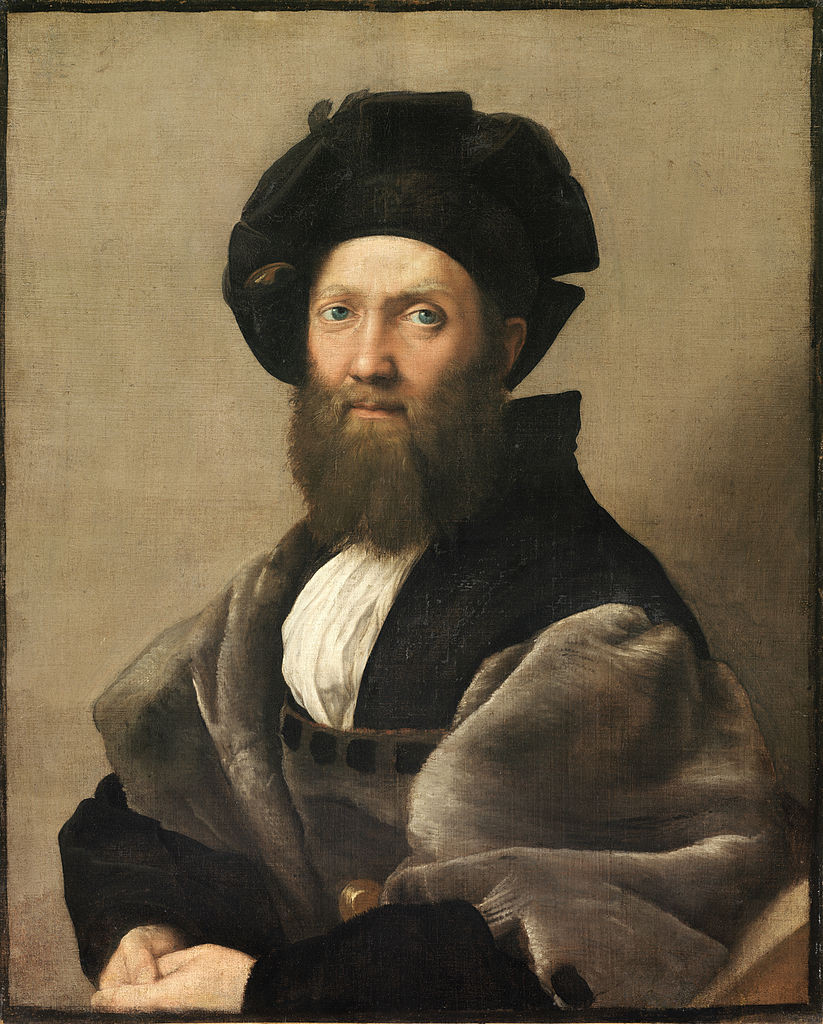What’s so special about Raphael’s Portrait of Baldassare Castiglione?
Walking through the corridors of the National Gallery in London I produced one of my pithiest faux-profound remarks: “Painting before 1860” I said “is about one of two things: Jesus or rich people.”
My comments were flippant – and deep and frightfully clever – but I maintain that something in my claim rings true; and for laypeople, disconnected from the fascinations of biblical history or court intrigue, this can make lengthier trips to the gallery more than a little tedious. Many of these works are dull at first and seem to offer little hope of any future enjoyment. Even assuming we come to appreciate their technical mastery we may still wonder how long brush strokes can hold our interest.
But people – and very well educated people at that – have gone on about these artists and their works for centuries; and if we are to believe that all of that reading and all of those hours spent in museums, were of any value, then perhaps it’s time listen to what they have to say.
In this spirit I picked up a copy of Françoise Barbe-Gall’s How to Look at a Painting; and right there, smack-dab in the middle of the first page, was Raphael’s Baldassare Castiglione – a Renaissance portrait of (you guessed it) an old rich guy. Perfect, I thought, let’s get to the bottom of this.
Alright, Mr. Barbe-Gall, let’s hear it: what exactly is so special here?
As it happens, quite a bit.
But there are limited hours in the day so let’s just focus on colour. Raphael chose to depict his subject, a prominent Italian courtier and ambassador, in a series of contrasting shades: deep dark black for his velvet doublet, a sharp white for his shirt, and a deep fluctuating grey for his fir covering. The palette, the author tells us, reflects the personality and the skill set of his sitter, a man “conscious of the need to mediate between extreme positions”, and one comfortable with shades of grey – and well over fifty, I hear. (I know.)
“The diplomat is skilled at listening to different points of view and of weighing up each of them without neglecting the substance of the other. He takes account of everything, assessing the light and the shade and preventing contradiction and conflict. Who better to know the value of grey and the infinite wisdom of its associations in a world in which colours vie with one another for their splendour.”
Raphael tells us something important about the man he depicts without any recourse to symbolism or obscurity; the message is in the man himself. The effect is subtle but powerful, and one of the many reasons the work is considered a masterpiece.
With this one insight Mr. Barbe-Gall shows us something really rather profound about the work and how it is we ought to approach realistic art in general. Though it may appear to be a lifelike rendering of some Mediterranean toff, choice and discretion for the artist remain. And in art those choices can mean everything.
So next time you make your obligatory pass through the halls of aristocratic portraits in the Uffizi or the Louvre, where Mr. Castiglione hangs, let your eyes linger just a little longer and ask yourself ‘why like this?’

